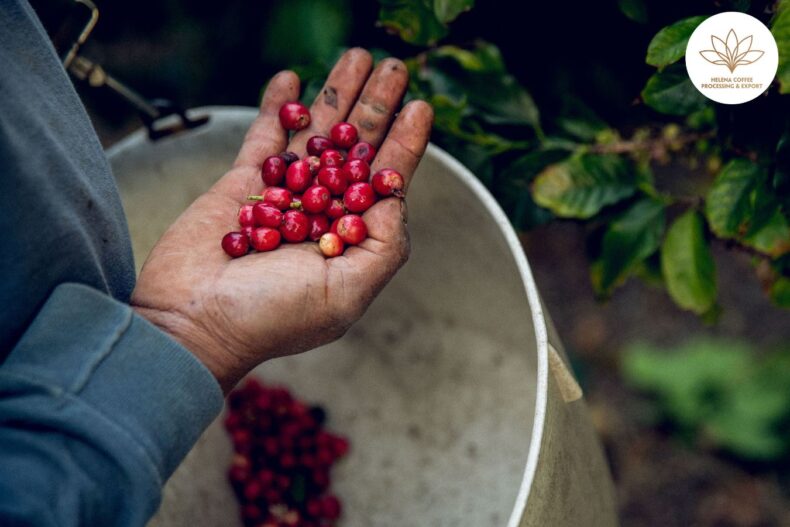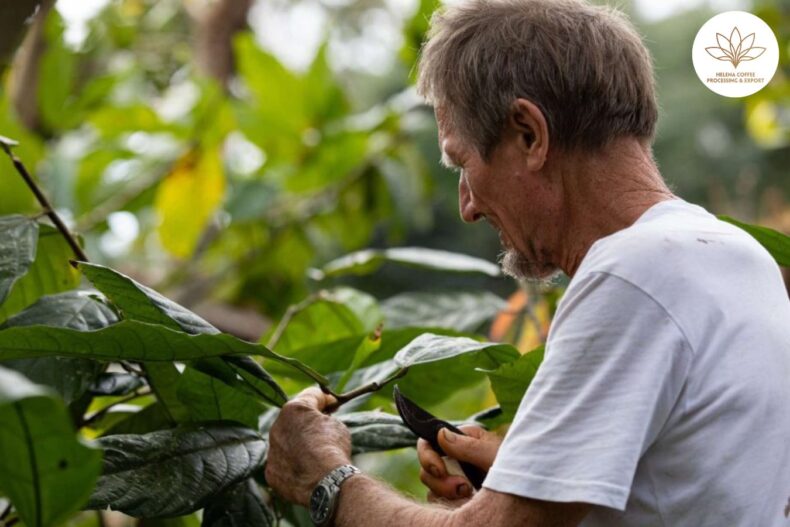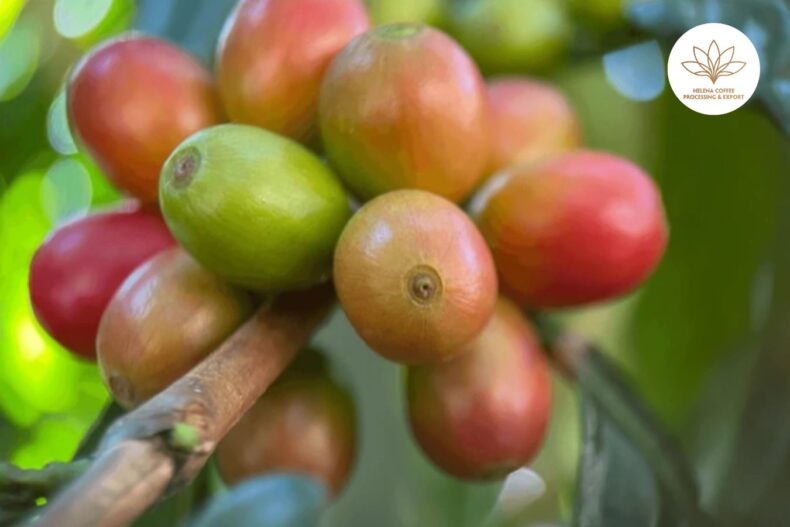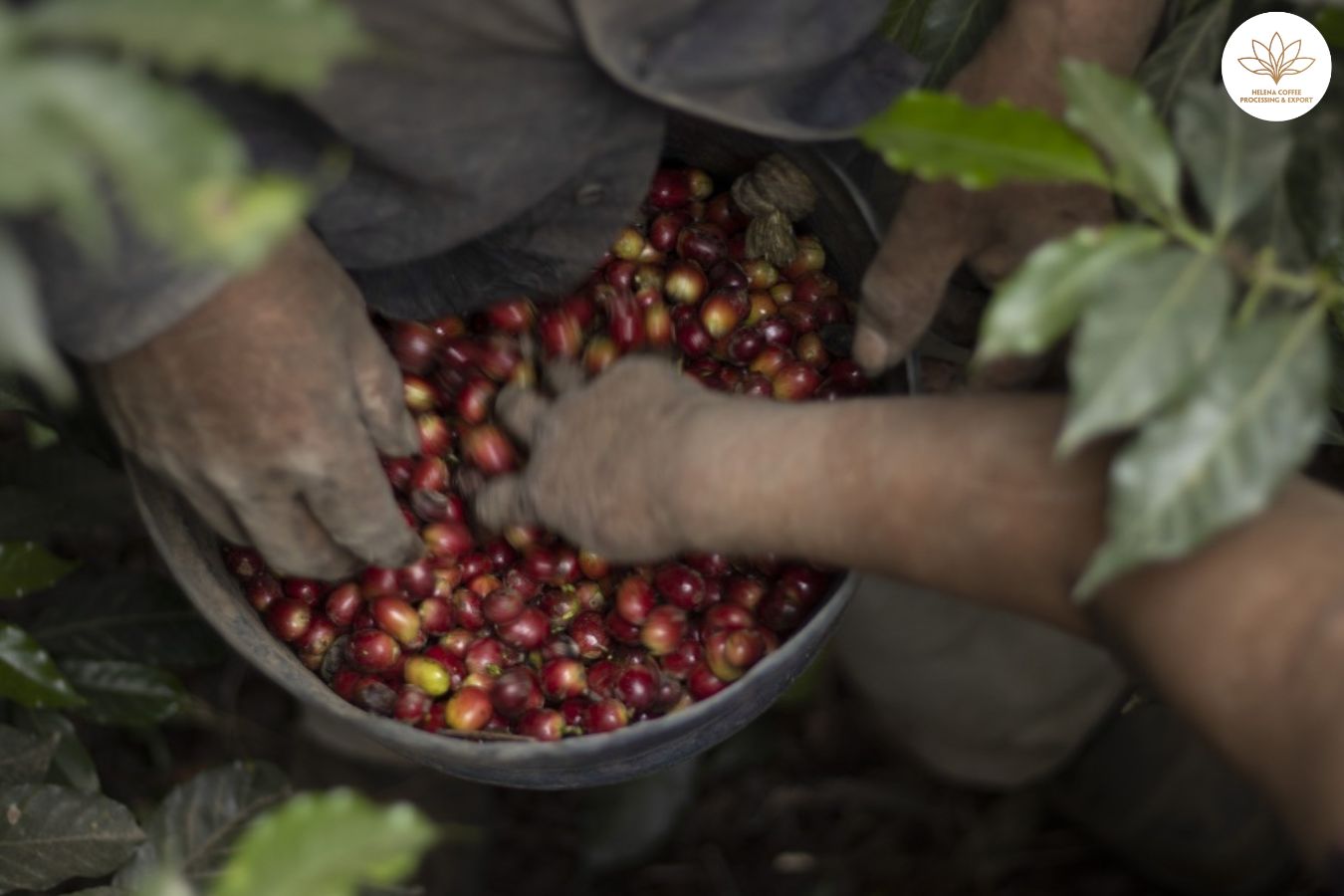
Water is a vital resource in coffee production; However, the effects of climate change are reducing its availability in producing areas.
While some regions do not yet have water shortages, others struggle with irregular rainfall and prolonged droughts. The situation worsens if we take into account that many coffee growers continue to depend on the benevolence of the climate, without the support of irrigation systems that guarantee water supply.
To learn more about irrigation models, their advantages and challenges, I spoke with a producer and an agronomist. Read on and find out what they told me.
What is the irrigation system about?
Although water is an essential resource for agricultural activity, it is the one that is most used irrationally. It leaves enormous losses that cause overexploitation of water resources and the weakening of aquifers.
In this search to optimize water, and at the same time develop viable long-term coffee farming, agriculture adapted irrigation or irrigation systems. Its purpose is to supply water to crops through technical installations. Generally, the structures provide collection services (surface and groundwater), conduction and, in some cases, storage and distribution on the farms.
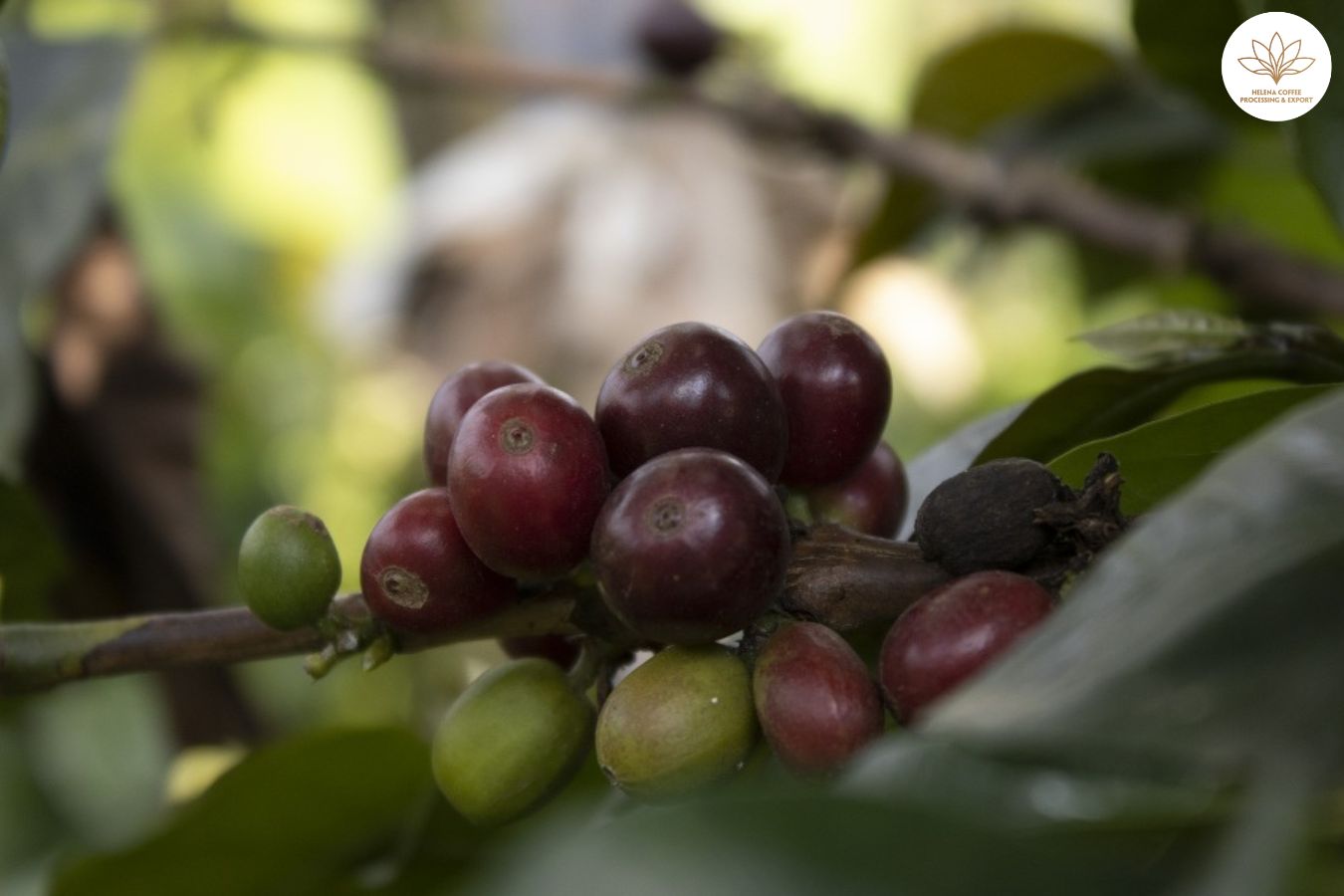
Pedro Morales Mijangos, agronomist and coffee producer in Guatemala, explains that these systems provide the volume of water that plants require to avoid water stress and obtain greater yield and quality in the grain.
There are several types of systems but the ones commonly found on farms are sprinkler, drip, flood or cannon, says Pedro. It is key that the producer chooses the one that best suits him and adapts to his needs. It is common to find farms that do not have correct management or installation of structures.
Advantages of this system
In the first instance, one might think that irrigation systems only ensure the availability of water in seasons of drought or low rainfall. Despite this, the advantages cover other areas, from productive, economic, environmental and social.
Pedro points out that at an agronomic level, irrigation systems function as alternatives to make up for the water deficiency that occurs in some phenological stages of coffee growers, such as flowering, vegetative growth, fruit filling or maturation.
“We provide water with the irrigation system to achieve a more homogeneous flowering. With this, we can make only one or two cuts and not have so many blooms within a cycle,” he explains.
On the other hand, the producer could reduce dependence on labor if he implements a fertigation model. By dissolving fertilizers in water, each plant receives the amounts it needs for optimal development.
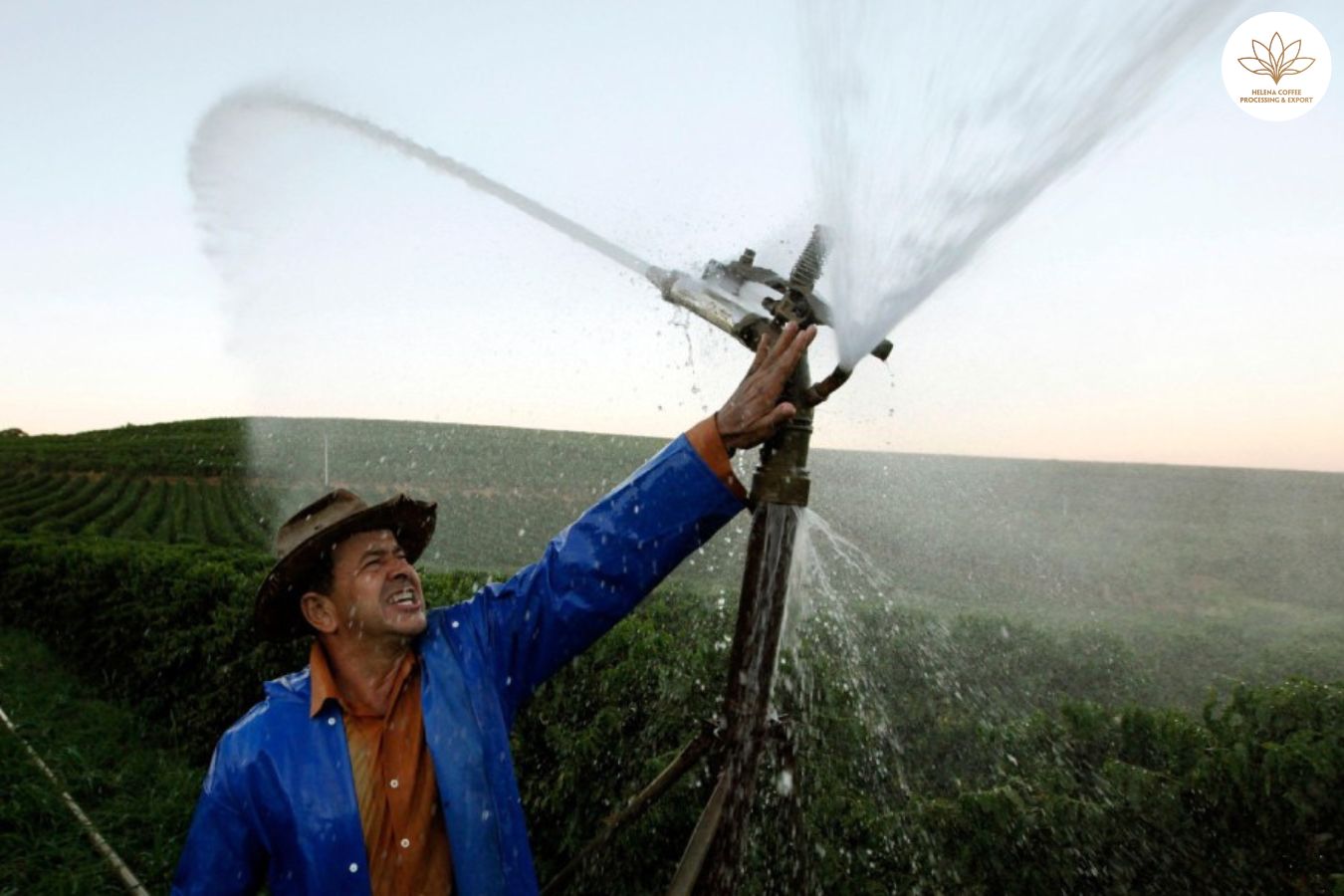
Nery Gonzalez Hernández is a coffee growersat Finca Caribal in La Paz, Honduras. He says that in the past coffee farmers relied on predictable seasonal patterns to plan their harvests and maintain stable production.
Unfortunately, the climate crisis has drastically altered patterns. Given these changes, the need to implement irrigation models that guarantee water when the plants require it has become more latent.
“Mainly, it would ensure that some crops have production all the time. In coffee, the irrigation system could be scheduled and the plant flowered in shorter times. That would lead to having a more scheduled harvest period,” he explains.
Water provision systems also promote diversification of other foods and additional income during non-harvest times. “For example, tomato and pepper crops are possible when there is not so much production, and the market demands them,” adds Pedro.
Irrigation systems in coffee production
Irrigation is a practice that is usually associated with vegetable farming. This is due to its high demand for water and its sensitivity to water stress compared to other crops. Coffee farming, likewise, can obtain significant benefits from the adoption of irrigation systems.
Although coffee is usually grown in areas with defined rainy seasons, it is not exempt from facing situations in which irrigation is a viable option.
An example is Brazilian coffee farming, which has been implementing these systems for several decades. Pedro points out that, in addition to Brazil, other Latin American countries began to experiment with this model since the 80s and 90s, when many plantations were hydrated through sprinkler irrigation, cannon application or drip irrigation.
Nery affirms that the percentage of Honduran coffee growers who adapt these systems in their coffee plantations is minimal. Meanwhile, its use is more common in vegetable gardens. A similar scenario is seen in Colombia, where more than 95% of coffee farming does not use irrigation and is totally dependent on rain.
According to the report The state of water and agriculture in the world, published by FAO in 2020, by 2018 the irrigated area in Latin America was two million hectares, 7% of the total area that corresponds to 330 million hectares.
What solutions do you provide to producers?
A plant that is not under stress can produce more and with higher quality. Consequently, water stress, whether due to lack or excess of water, is one of those responsible for low agricultural yields around the world.
According to Pedro, the arrival of irrigation technologies to farms could increase their productivity, profitability and even provide a healthier life for the coffee trees.
“It is an aid system at a time when important stages for the plant are developing, whether flowering or growth. This will definitely translate into greater growth and more production,” he concludes.
Timely access to water also helps to enhance the organoleptic properties of coffee. If the plant takes advantage of all the nutrients available in the soil, the grain will concentrate more soluble solids, which positively influence the flavor, texture, body and balance.
The responsible use of water not only entails immediate economic and agronomic benefits, it also represents a long-term investment in the preservation and sustainability of natural resources.
What should be taken into account to implement them?
Irrigation systems are not applied homogeneously for all farms. Therefore, the decision to implement an irrigation model must be based on a prior analysis of the climatic conditions, topography, water availability, the water needs of the plants and other relevant factors of each plot. Each action must be based on the advice of an agronomist or irrigation professional.
“We must evaluate whether the coffee plantation really has the capacity or is suitable. As we install the system there are many plants that may no longer be suitable for the irrigated condition and we are going to expose them to a high metabolism or a high demand condition. With this we can affect it more than benefit it,” Pedro recommends.
Additionally, it is important that producers have a water source (river, well or tank) with a constant flow throughout the seasons. The use of this source should not represent any problem for the surrounding communities.
“When an irrigation system is going to be installed, it is necessary to send a sample to a laboratory to tell us if the water is suitable or not suitable for irrigation. Some of the conditions it takes as a basis are heavy metals that the water may have, which may be high in sodium or with too high electrical conductivity,” adds Pedro.
Choose a plan based on available resources
Farmers should choose a design plan that suits their economic capital. Each system requires a particular infrastructure: pipes, valves, pumps, sprinklers or drippers, which must respond to the climatic conditions and the demands of the plantations.
“For example, if the water source is below, you have to design tanks or a specific system to raise the water and irrigate downwards. Another point is the distances and the types of hose that will be used, and in what stages the irrigation system will be used,” Pedro complements.
In the long term, these technologies will require regular maintenance to guarantee their optimal functioning. Likewise, it is key that the personnel in charge of operating these systems are properly trained.
What limitations may they present?
When we talk about irrigation technology, we also talk about an investment. It implies an economic return as long as the implementation is adequate.
Cost is one of the variables that most limits producers when it comes to accessing these technologies. The majority of farmers dedicated to coffee growing are small-scale, live in conditions of poverty and with low purchasing power, which reduces the opportunities to access credit from financial institutions.
Nery says that it is one of the reasons that has prevented the widespread irrigation in coffee-growing regions. Generally, it is large coffee growers who have the economic resources to modernize their farms. “At the small level it has become more experimental, large producers have greater ease and access to resources, either via financing or other income not necessarily from coffee,” he points out.
The topographic conditions of the producing origins also add to the obstacles. Nery points out that in Honduras, 40% of the plantations are grown on slopes, which make the irrigation system difficult.
The coffee growing of the future poses more erratic environmental conditions that can trigger a shortage of water resources. Producers must be aware that water is a vital and irreplaceable element in agriculture. This legitimizes the need to implement irrigation systems so that water use is efficient, improves productive conditions and is more competitive in times of climate change.
FAQS:
